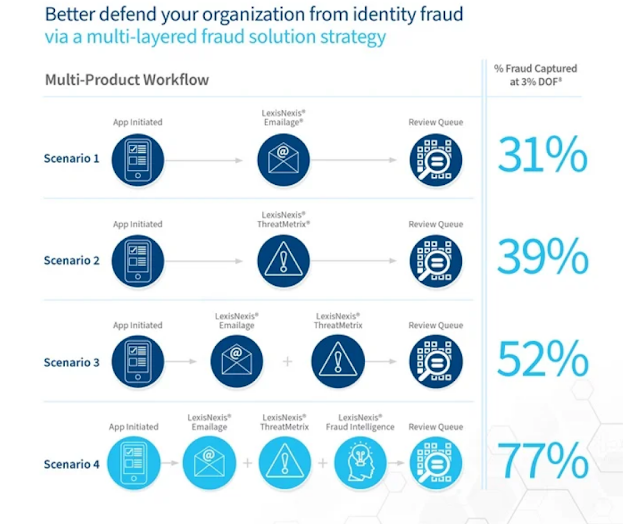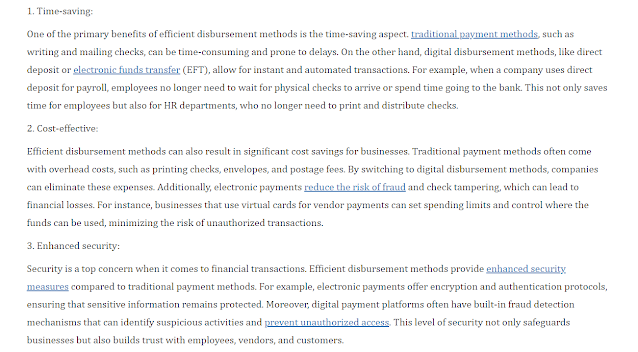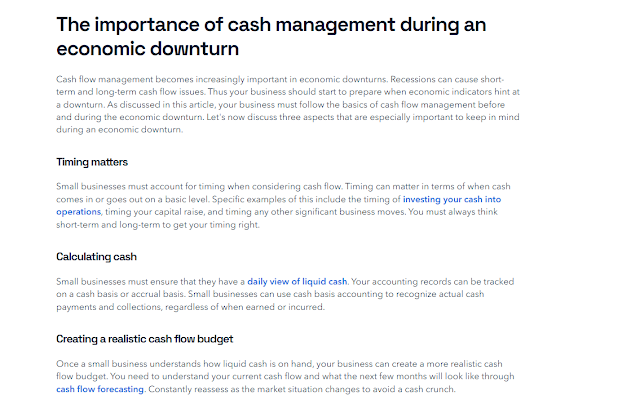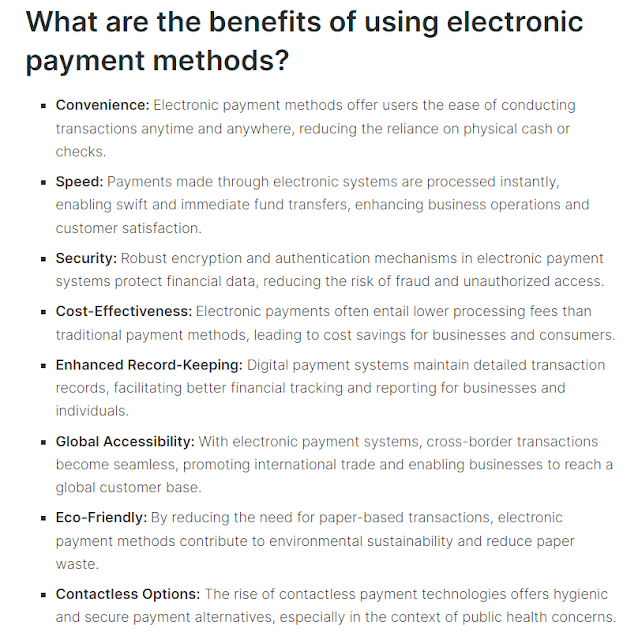 |
| Elevating Brands |
Small businesses are always under the threat of payment fraud, they however don’t take it seriously. In fact it is a catastrophe to ignore this because such ignorance can cause financial insolvency and even the closure of the organization. The level at which it is rampant is worrying. According to a report from SEON in 2021, there were unimaginable 1,862 data breaches that exposed as many as 293 million victims. These statistics show how common payment frauds are and why entrepreneurs should ensure they have secure systems in place.
Building a Multi-Layered Defense Against Payment Fraud
 |
| https://risk.lexisnexis.com |
In today's digital landscape, payment fraud is a constant threat for businesses of all sizes. Here's a deep dive into proven strategies to combat it and safeguard your financial well-being:
1. Partnering with a Secure Payment Processor:
- Not all platforms give equal priority to security.
- Choose a processor that comes along with advanced features like Encryption
- This involves the use of solid encryption protocols that scramble data when it is being transmitted making sure that unauthorized persons do not get access to it.
- One should look for systems that can detect fraud by analyzing transactions in real time, based on certain predefined parameters (such as location and amount).
2. Empowering Your Team to Be Fraud Fighters:
- Knowledge is power.
- Invest in employee training about common tricks used in fraud like phishing scams and social engineering so that they are able to identify
- Orders unusually large or out-of-patterns
- Change existing payment methods.
- Inconsistent billing or shipping information.
- Encourage a culture of mindfulness and responsibility.
- Employees must be encouraged to report any suspicious activities promptly since they are your first line of defense.
3. Real-Time Monitoring and Alerts:
- Establish systems for continuously monitoring transactions.
- Create notification systems for instances of such as Transactions that exceed the pre-set spending limits.
- Purchases from unknown places.
- Multiple failed login attempts.
- Don’t depend only on automated alerts.
- Review your transaction logs often to find anything that may have slipped through the cracks.
4. Fortifying Authentication: Beyond Passwords:
- The traditional passwords are insecure, in this case MFA adds a secondary layer of protection which requires an additional verification step such as; a code sent to phone or fingerprint scan.
- Figures show significant improvement: 49% fewer data breaches involving compromised credentials were recorded by a 2023 study when MFA was used.
5. Partnering with Fraud Prevention Specialists:
- Fraud prevention providers give end-to-end solutions tailored specifically for your firm’s needs such as Real-time transaction monitoring using advanced analytics for proactive threat detection.
- Chargeback management and dispute resolution assistance.
- Regular security audits and vulnerability assessments.
- The financial impact of data breaches can be catastrophic.
- The adoption of such multi-tiered approaches will reduce your payment fraud exposure, build customer trust and remove the worry of growing your business.
Understanding and Combating Negative Cash Flow in Small Businesses
 |
| https://quickbooks.intuit.com |
Negative cash flow – it sounds like an easy concept but to small businesses, it means much more than that. It is the lifeblood of any organization and when this sputters, the results can be catastrophic. In this in-depth exploration we look at negative cash flow including its far reaching effects and how to keep your business alive.
- The Two-Sided Nature of Cash Flow
Cash flow represents money flowing in and out of a business. When the revenue from sales exceeds expenses, then this business is healthy. This enables the smooth running of activities without disruptions as well as ensuring that there are funds for investment in growth while creating an emergency fund to cater for unplanned events.
On the other hand, negative cash flow turns the tables. It implies that a business is experiencing a “cash crunch” where its costs continuously exceed total sales revenues. Such cash shortfalls can cause paralysis in day-to-day operations resulting in various problems ranging from lack of money to settle utility bills or meet employees’ monthly salaries to no ways of maintaining their inventories or even expanding further.
- The Brutal Reality: A Grim Picture Painted by Statistics
The results of negative cash flow are grim. One study reveals a disturbing truth that companies with unstable cash flow close almost twice as many times as those with stable cash flow, thus underlining the significance of engaging in proactive cash flow management to ensure financial stability and long-term growth.
- Understanding the Culprits: What Leads to Negative Cash Flow?
Multiple factors can combine and plunge a small business into negative territory for its cash flow. Here is what accounts for most of these culprits:
- The Delinquent Dance: The Scourge of Late Payments
Late customer payments can be an enormous headache for many small firms. An overwhelming 61% of small entities are confronted with issues related to cash flows as a result of clients who take time paying them according to survey research. This freezes up the money flow, making it impossible to meet current obligations.
- The Overhead Octopus: Squeezing Profits with High Expenses
Lavish overhead costs have the capacity to choke off a business’ cash flow. Rent, utilities and other fixed expenses reduce earnings minus increasing operational funds or fueling growth initiatives.
- The Unexpected Enemy: Emergencies That Disrupt Plans
Even the most organized budgets can be affected by unforeseen emergencies like equipment breakdowns or acts of God. It may entail immediate cash outlays that could shift cash flow toward the negative side.
- Enabling Entrepreneurs: Tactics for Countering the Cash Flow Challenge
By establishing what causes negative cash flow, small business owners can work on specific ways to improve them. Here are some good strategies of improving cash flow:
Conquering the Delinquent Dance: Approaches for Quicker Payments
 |
| https://fastercapital.com |
Establish more stringent payment terms that come with clear late payment penalties. Encourage early payments by offering discounts. Ensure quicker invoicing and follow up process to enforce prompt payments.
- Cutting down the Overhead Octopus: Cost Optimization
Do cost analysis to find areas where expenses can be reduced such as suppliers with whom there might be room for better negotiation on rates. This might involve outsourcing or streamlining operations aimed at reducing overhead expenses.
- Creating a Cash Flow Cushion: Forecasting’s Influence
Have precise cash flow forecasts in order to predict future needs and possible shortfalls. As a result, steps like arranging credit facilities or postponing non-essential purchases could be taken beforehand.
An awareness of why negative cash flow happens and its implications, as well as effective management techniques, can help small enterprises go through this financial hurdle and establish a strategy to succeed over a long period. Bear in mind that the active approach towards cash flow management is crucial for surviving tough times and enabling your business to grow fruitfully in the future.
A Detailed Explanation of the Cash Flow Management Strategies.
 |
| https://www.plooto.com |
Money flow is a living thing in any organization, it refers to movement of money in and out. Good cash flow management means that you have enough liquid resources to cater for your bills, reinvest in expansion and tackle unforeseen problems. Below are some strategies that can help improve on your cash flows:
1. Negotiation is Key: Supplier Payment Terms
 |
| https://aavenir.com |
Unlock Cash Flow Potential:
- Many suppliers, particularly those dealing with established businesses, are willing to offer extended credit periods.
- Just by negotiating an extra 30, 60 or even 90 days to pay your bills can make a big difference in improving your cash flow situation.
- When you do this you have freed up much needed capital which you could use for other pressing needs like inventory investment, marketing or any unforeseen emergencies.
Become a Favored Customer:
- Reliable businesses with a consistent payment history are more likely to secure favorable payment terms from suppliers.
- By demonstrating your creditworthiness and commitment to timely payments, you position yourself as a valued customer.
- This can lead to better deals beyond just payment terms, potentially including exclusive discounts or priority service.
Decrease Risk:
- Still, negotiating extended terms can serve as an insulator to unanticipated events.
- Suppose your firm faces a temporary fall in sales volumes or encounters delays while collecting amounts due from its own customers
- The extra days allowed to settle supplier invoices will ensure that your business is not charged any penalties for late payments and also prevent souring relationships with suppliers.
Incentive Discounts:
- Amendments were made to encourage clients to pay early.
- There are certain discounts ranging from 1-5% for settlements received within specific time limits such as within ten (10) days of invoice date that greatly encourage people to prioritize payments on your bill.
Programs for Motivation:
- It has been shown that loyalty programs aimed at rewarding buyers who always make timely remittances are worth considering.
- This could be realized by having stepwise systems which give more advantages to those who have had good payment records like saving points from future purchases or special offers exclusively on particular products.
Improved Accounts Receivable:
- By incentivizing early payments, you can significantly reduce the amount of outstanding invoices on your books (your accounts receivable).
- This translates to a healthier cash flow situation and minimizes the risk of bad debt.
2. Scrutinize and Streamline Expenses: Unleash Your Inner Cost Detective
 |
| https://payhawk.com |
Financial health is based on taking charge of your costs. In this process, we will wear our glasses and start investigating the charges to free up resources and discover opportunities for improvement.
Conduct a Financial Forensics Investigation
- Go through your bank statements, credit card bills, receipts (either physical or digital) for the past few months.
- The spending may be also categorized by some banks and credit card companies online.
- Sort out your expenses.
- Common examples include housing, utilities, transportation, groceries, dining out, entertainment subscriptions and debt payments.
- This step can be done easily with spreadsheets for budgeting apps.
- Some areas where you spend more money than you should are identified in relation to your income level as well as financial goals.
- Are there any recurring subscriptions that you seldom use?
- Did you find yourself eating out more often than expected?
- Do you have high utility bills?
Become a Dealmaker for Cost Savings:
- At no point hesitate at revisiting the current contracts and particularly that on telephone, internet, cable and gym membership.
- It pays to be loyal!
- Let them know your situation and see if they can offer you something better.
- Where other recurring payments like insurances, cell phones bills or connectivity can be shopped for.
- You might find some exclusive benefits especially for old customers who have not reviewed their policy in a while.
Optimize Your Business Operations:
- Identify areas where you could streamline activities and change behaviors to save money.
- Maybe you can bring your lunch instead of eating out?
- Carpool or use public transportation?
- Look into ways of saving energy at home.
- Consider setting up automatic transfers into savings accounts or bill pay so as to avoid paying penalties resulting from late payment.
3. Leverage Technology for Efficiency: Embrace Modern Payment Solutions
 |
| https://happay.com |
Online invoicing platforms:
- Stop doing things manually and switch to online invoicing platforms.
- They help you in creating as well as sending out invoices electronically hence saving on time and resources that would have otherwise been used.
- Many of them are usually pre-filled with your business details, avoiding mistakes during the whole process.
Automated reminders:
- No more chasing after late payers!
- A lot of online invoicing systems provide automated payment reminders.
- These can be through email or SMS, softly persuading customers to pay their bills expeditiously.
Secure online payments:
- You no longer have to wait for checks to come through the mail.
- Online invoice platforms mostly come along with secure online payment options.
- Customers can pay directly into the platform; this can be done using a debit card, credit card or even ACH bank transfers.
- Therefore, this ensures fast payment processing and minimizes losses or risks associated with misplaced or counterfeit cheques thereby reducing theft cases from such fraudsters.
Shortened Time for Payment:
- The time taken to receive money from your customers can be reduced significantly through the simplification of billing and payment procedures.
- This is critical in cash flow planning as it enhances availability of funds for business investment and capitalization on emerging opportunities.
Enhanced Cash Flow Predictability:
- By using internet invoicing and automatic reminders, you get improved visibility into your forthcoming income stream.
- Consequently, cash flow projection becomes more accurate, making it simpler to plan for future developments without experiencing unexpected financial shortages.
Minimized Back-office Workload:
- Online platforms that automate most billing operations release a lot of time and energy for you.
- Thus, you can concentrate more on sales, marketing and customer service among other core competencies that make up your organization.
4. The Importance of an Emergency Fund
 |
| https://www.homecredit.co.in |
How Much Should You Save?
- The standard rule of thumb that applies to emergency funds is to save 3-6 months’ worth of living expenses.
- This acknowledges the fact that one person’s situation may differ from another.
- These are things like rent or mortgage on your house, utilities, minimum debt payments, transportation costs and groceries.
- The essential costs for your dependents should also be included.
- Employees who are likely to lose their jobs due to a high risk of layoffs should have more money saved up.
- What does your health plan cover?
- How much are you going to pay out-of-pocket for medical bills?
- Before establishing a large emergency fund, you might need first to concentrate on paying off substantial amounts of outstanding debts.
- Nonetheless having a small amount set aside as an emergency fund is better than none for unexpected events while you work at reducing your burden.
Building Your Emergency Fund
- Write a specific, measurable, attainable, relevant and time-based goal for your emergency fund
- To keep you energized in the process, divide the sum of money you intend to save into smaller targets which can be easily achieved.
- Choose to automatically move funds from your checking account to your emergency savings account.
- By doing this, you will continuously save and achieve more quickly the thing that you want.
- Pinpoint places where you can reduce expenditure with a view to freeing up additional funds for use in your emergency savings account.
- You may consider taking up a side hustle or engaging in freelance jobs aimed at making extra money specifically for your emergency fund.
Where to Keep Your Emergency Fund
- Obtain a high interest savings account which offers competitive rates and increases your returns while making sure that your money is safe and available.
- Money market accounts may have slightly higher interest rates than regular savings accounts, but sometimes they come with restrictions on the number of withdrawals.
- Emergency funds are only supposed to be used in times of emergencies and not for everyday expenses.
- Do not touch it unless you absolutely need to.
- After using up emergency savings, it is essential that you begin to rebuild them immediately.
By applying these approaches, people have more control over their cash flows hence they make informed financial decisions, invest in growth options as well as establish a strong financial foundation for business success in the long term.
Final Verdict
Payment fraud is a danger to both small businesses and larger entities, so they must be aware of it and find ways to combat it. A multi-tiered defense approach that incorporates secure payment processor partnerships, staff empowerment, and live monitoring would thus lower companies’ chances of loss in terms of finance. Cash flow analysis and the adoption of effective strategies for managing it is equally important for small business sustainability and expansion. Identifying causes of negative cash flow and taking proactive steps to fix them will help in ensuring that SMEs obtain sufficient financial resources for their survival.
 |
| Blogchatter |
